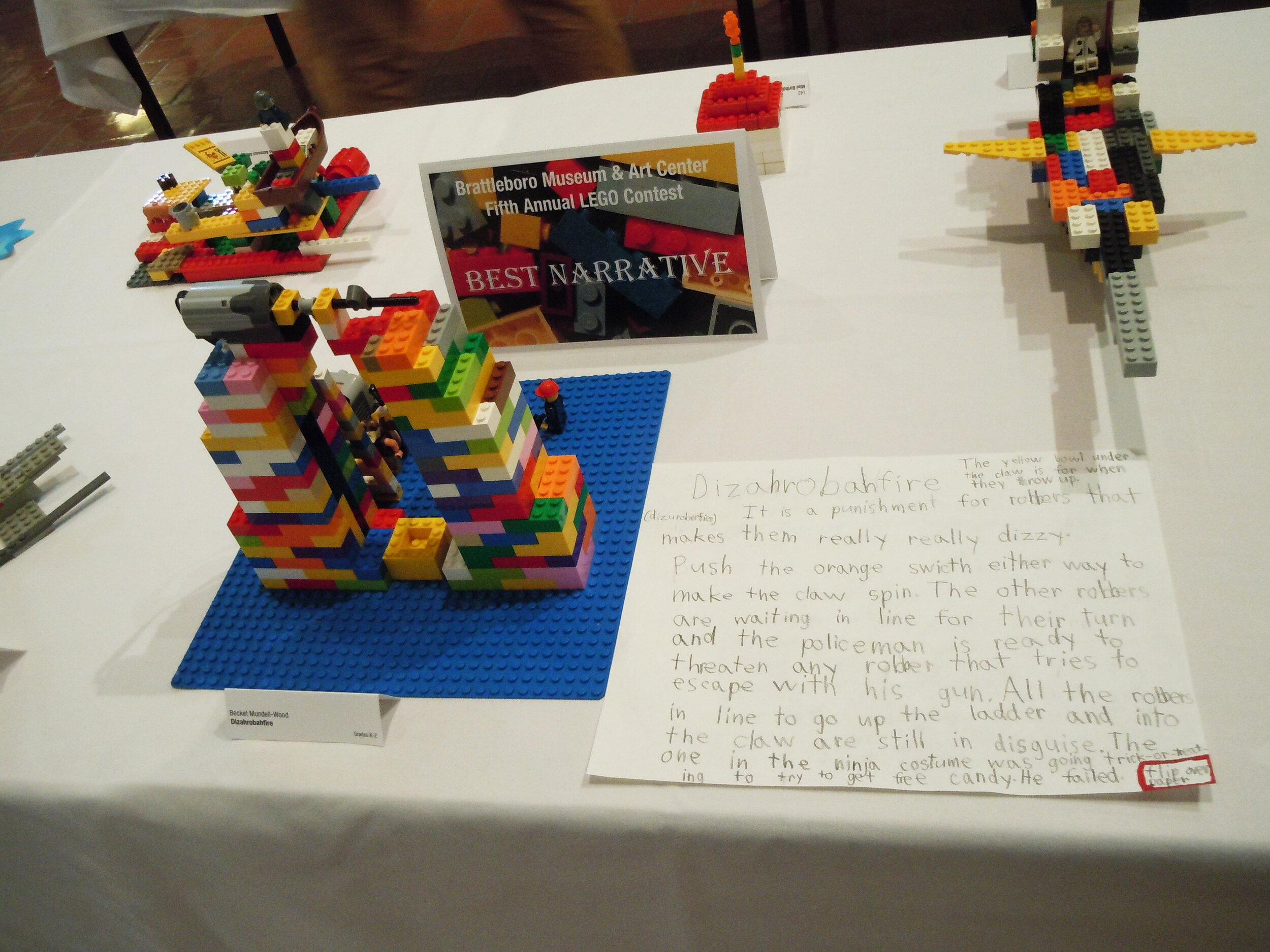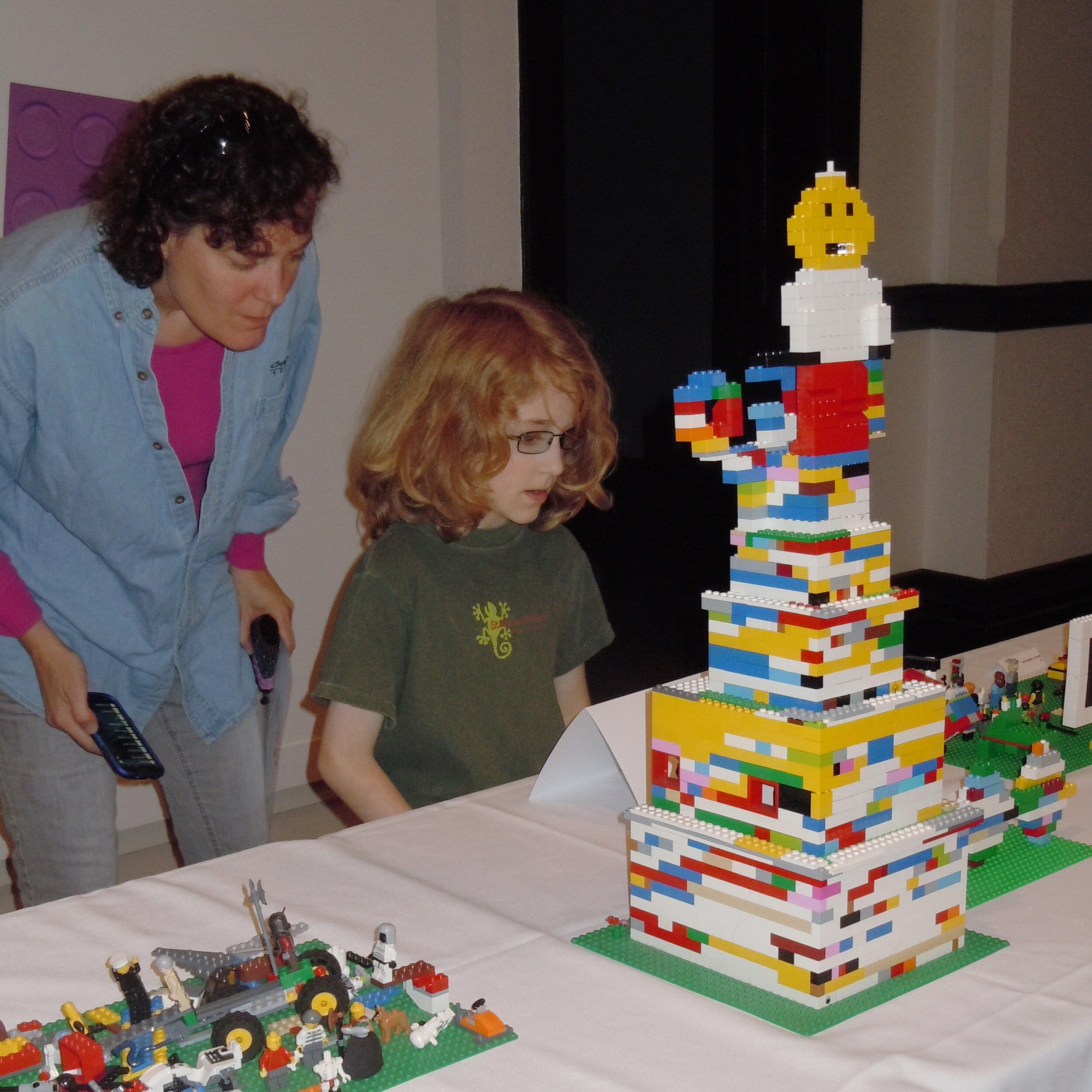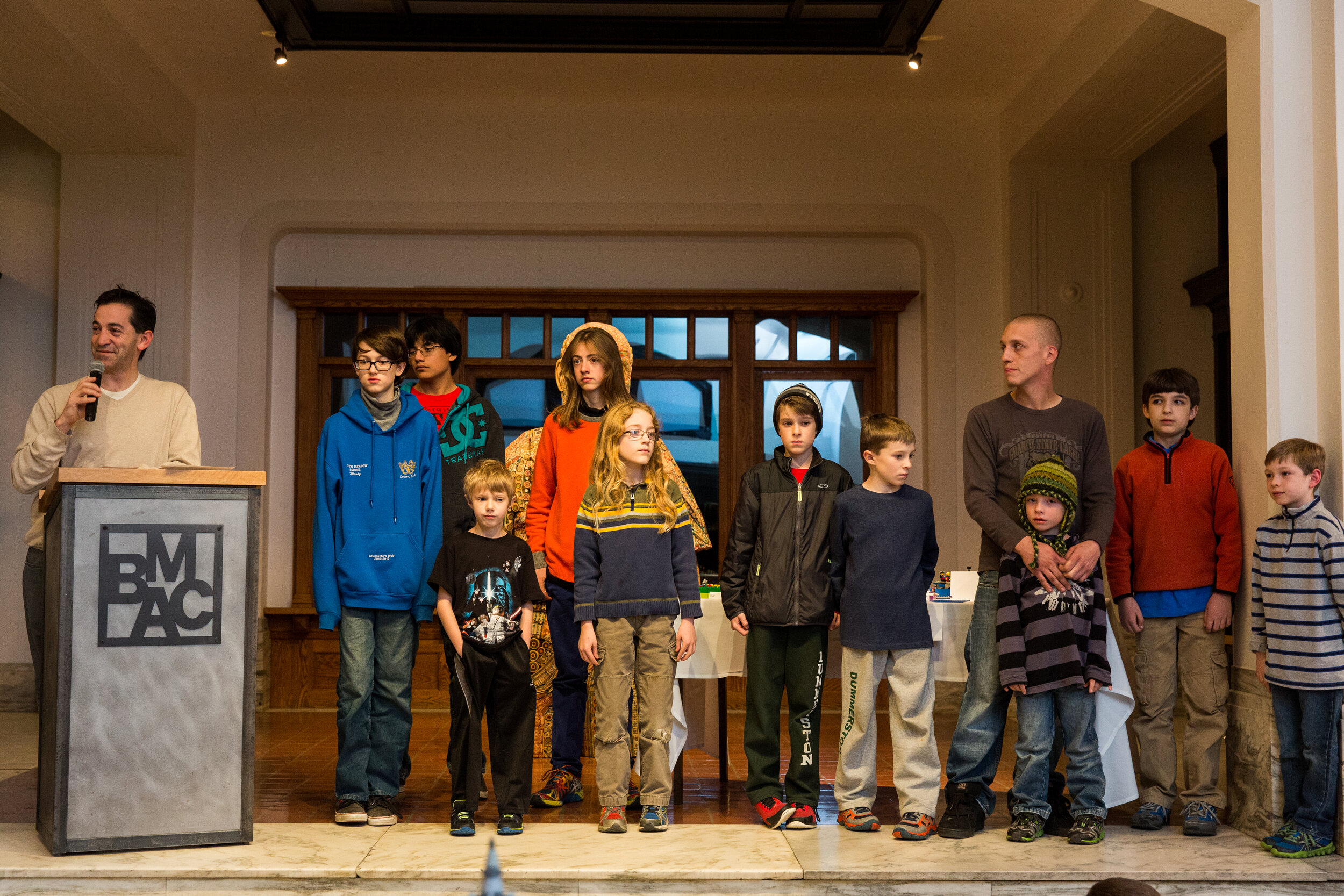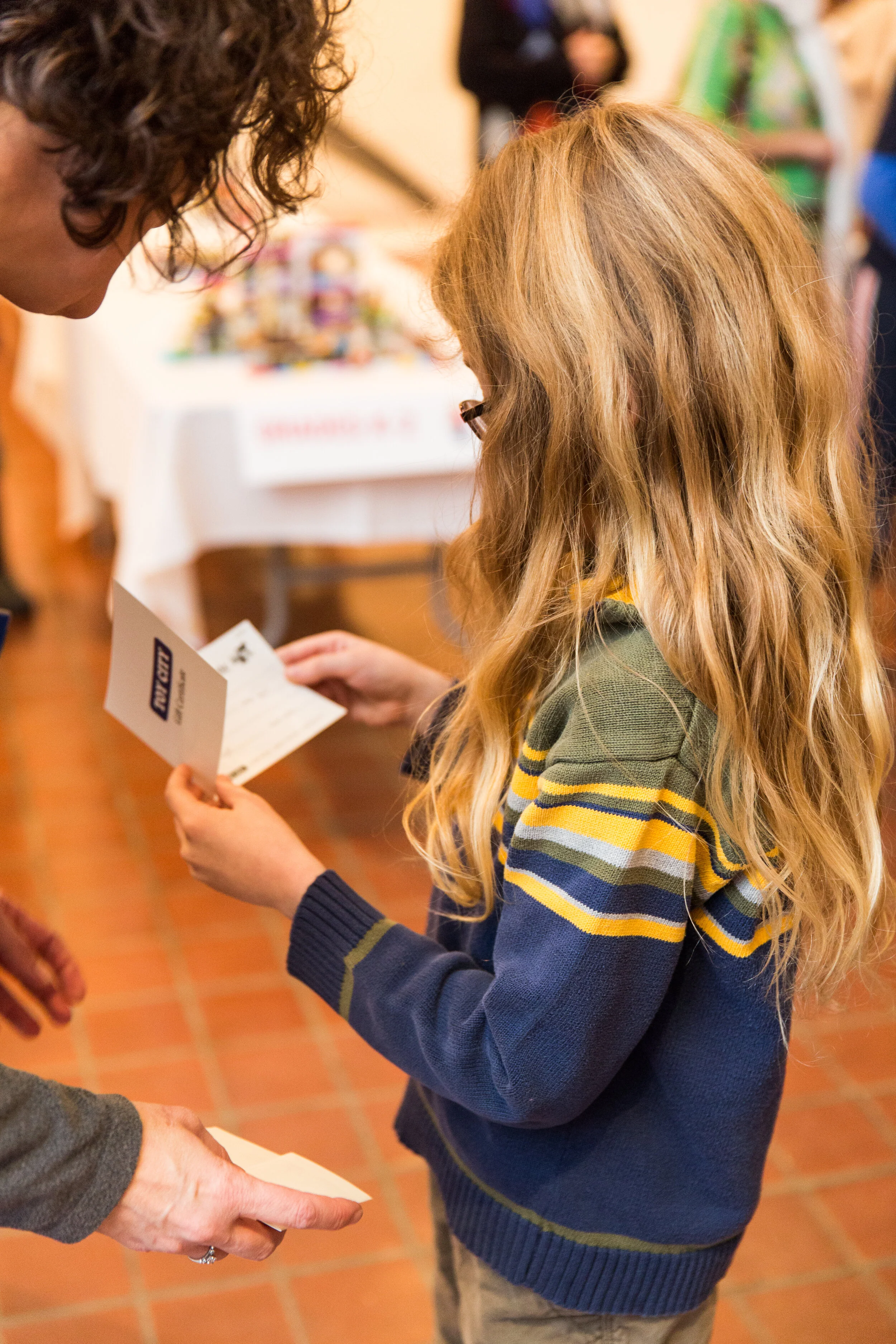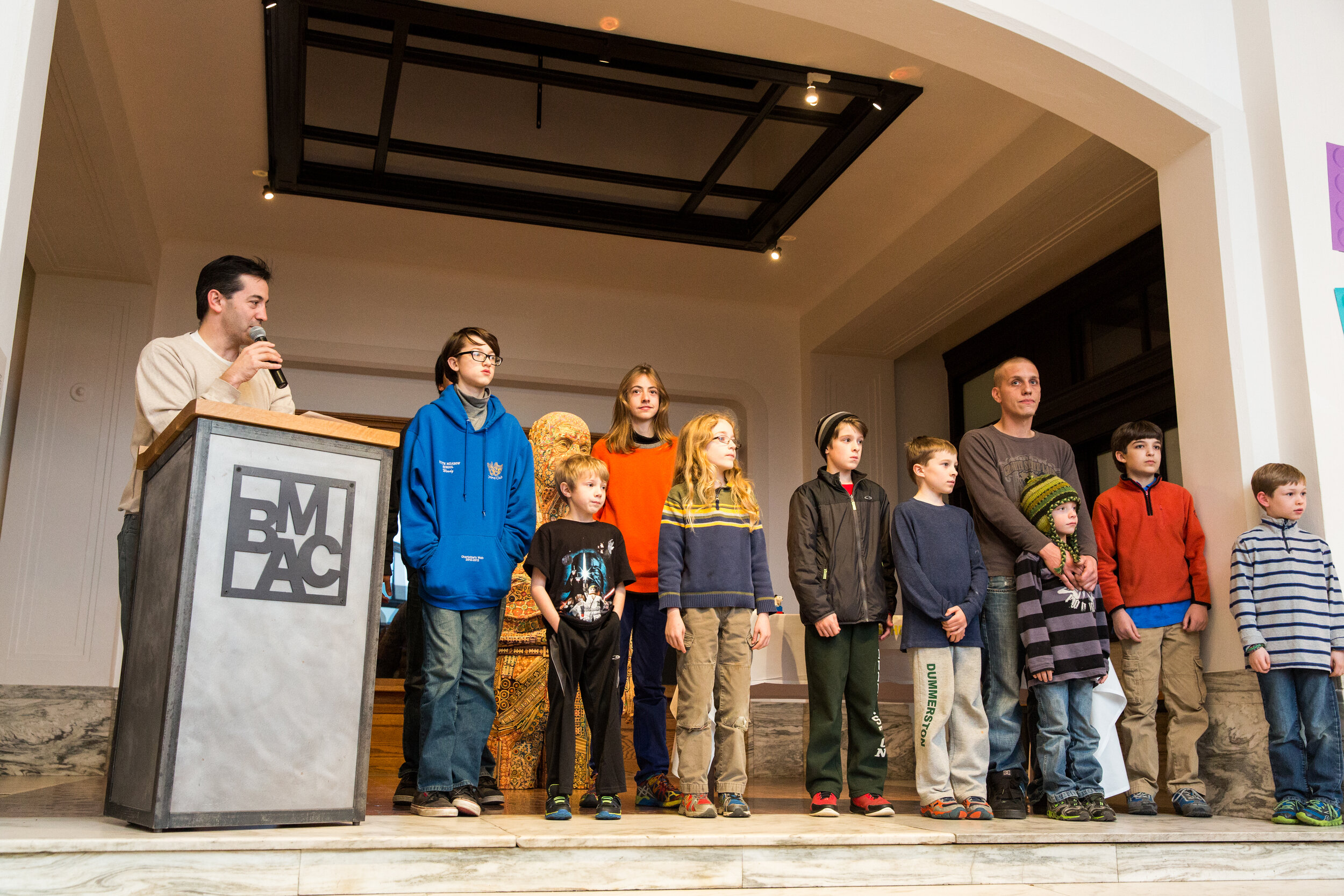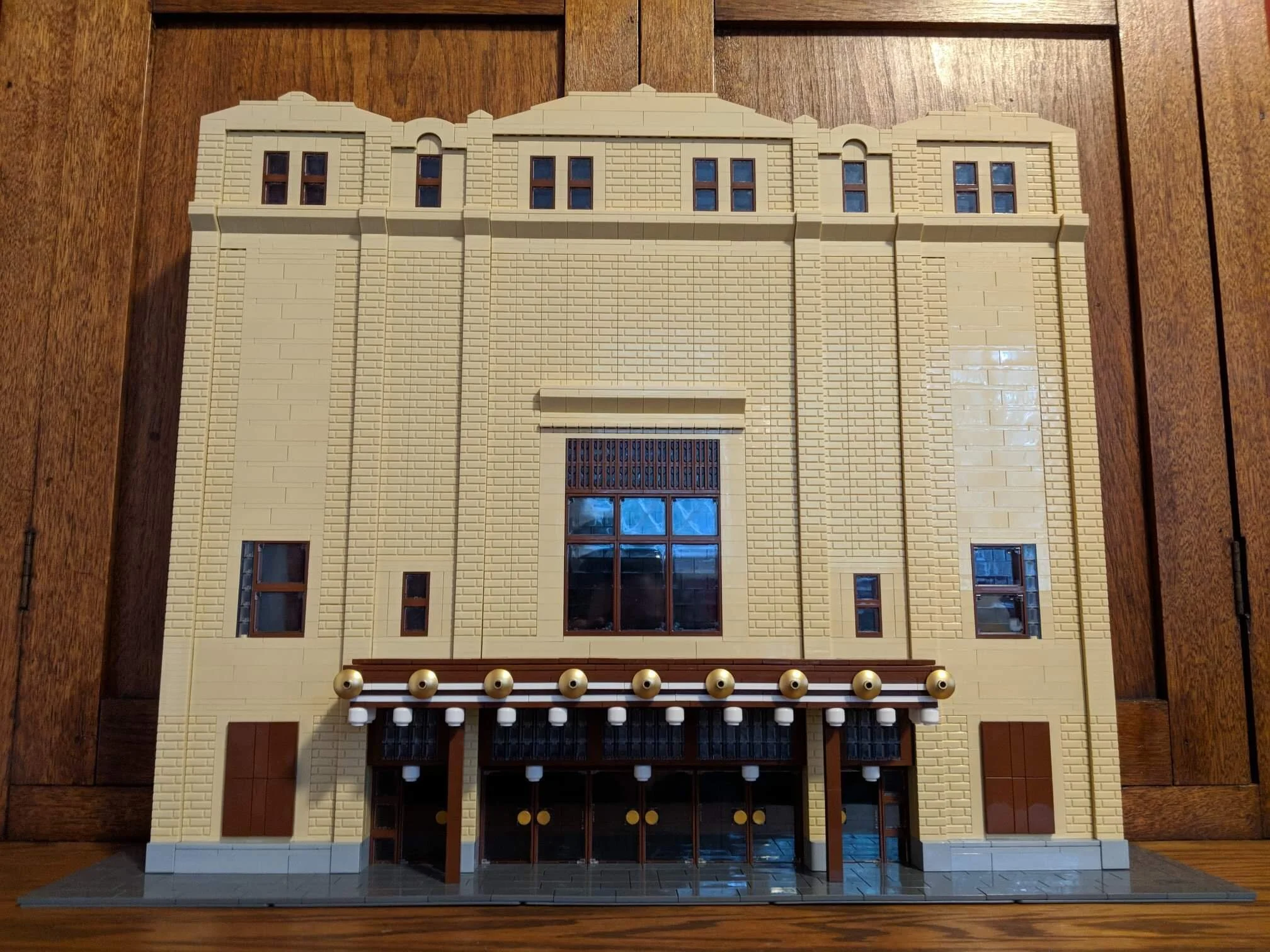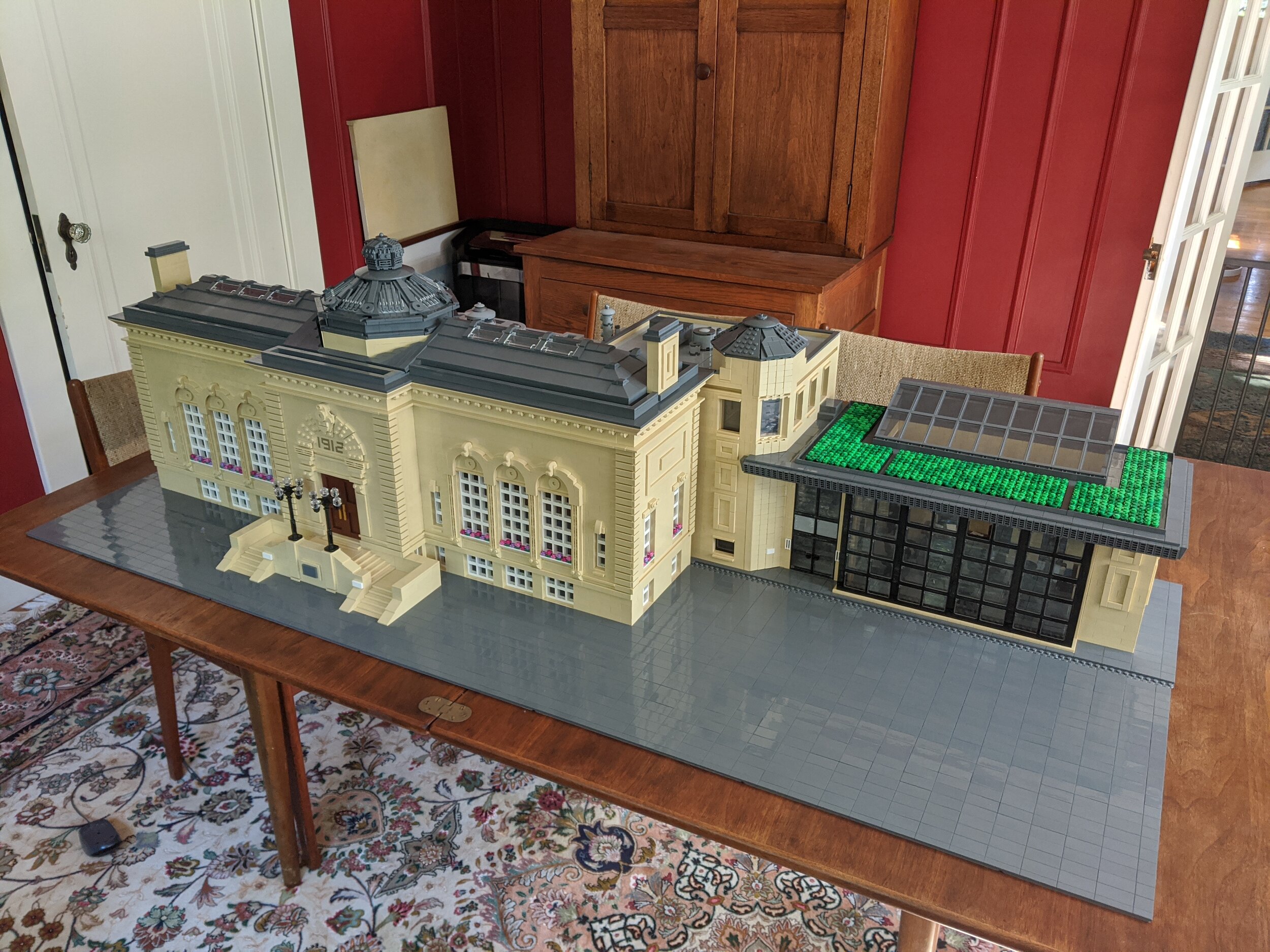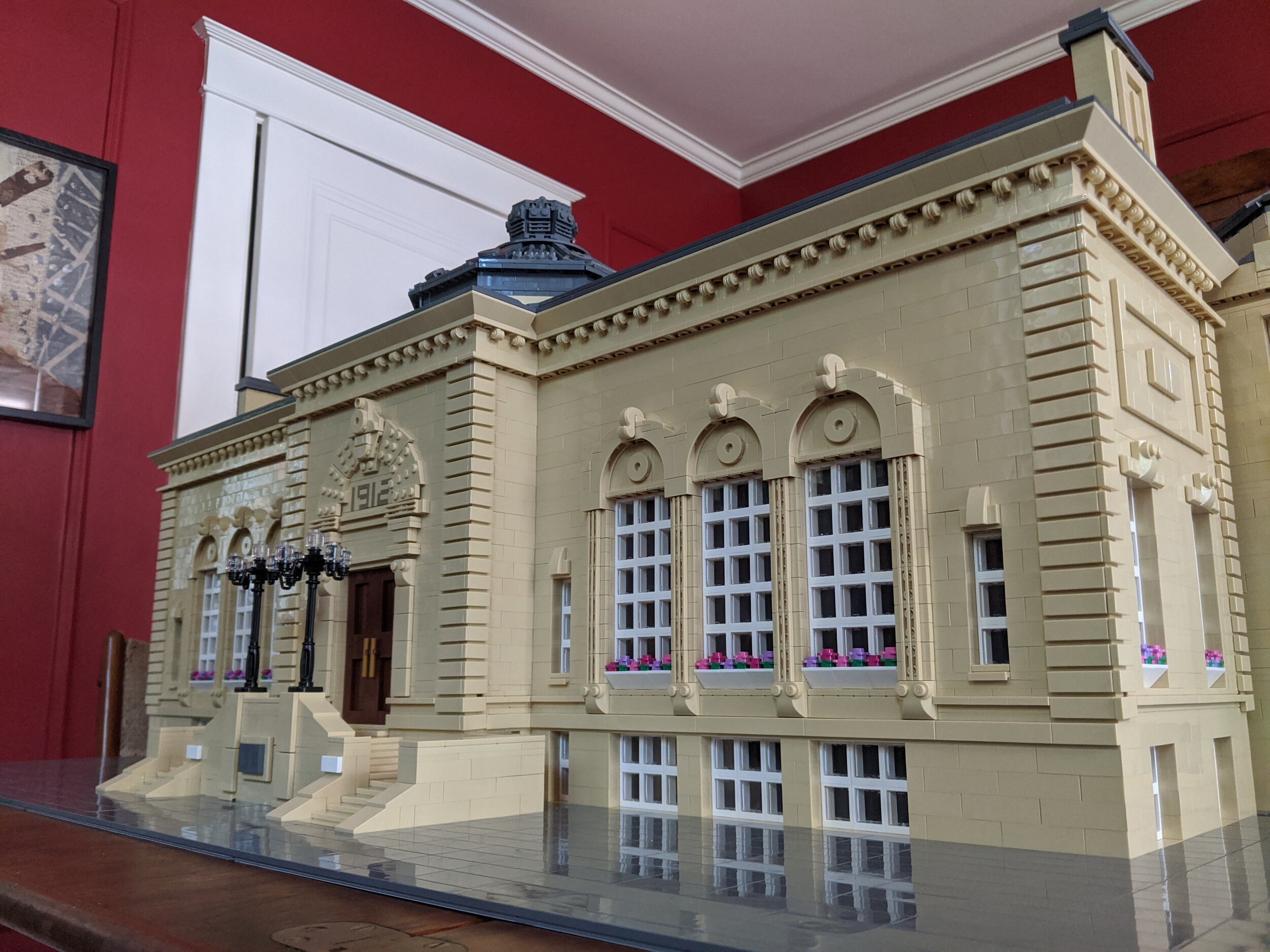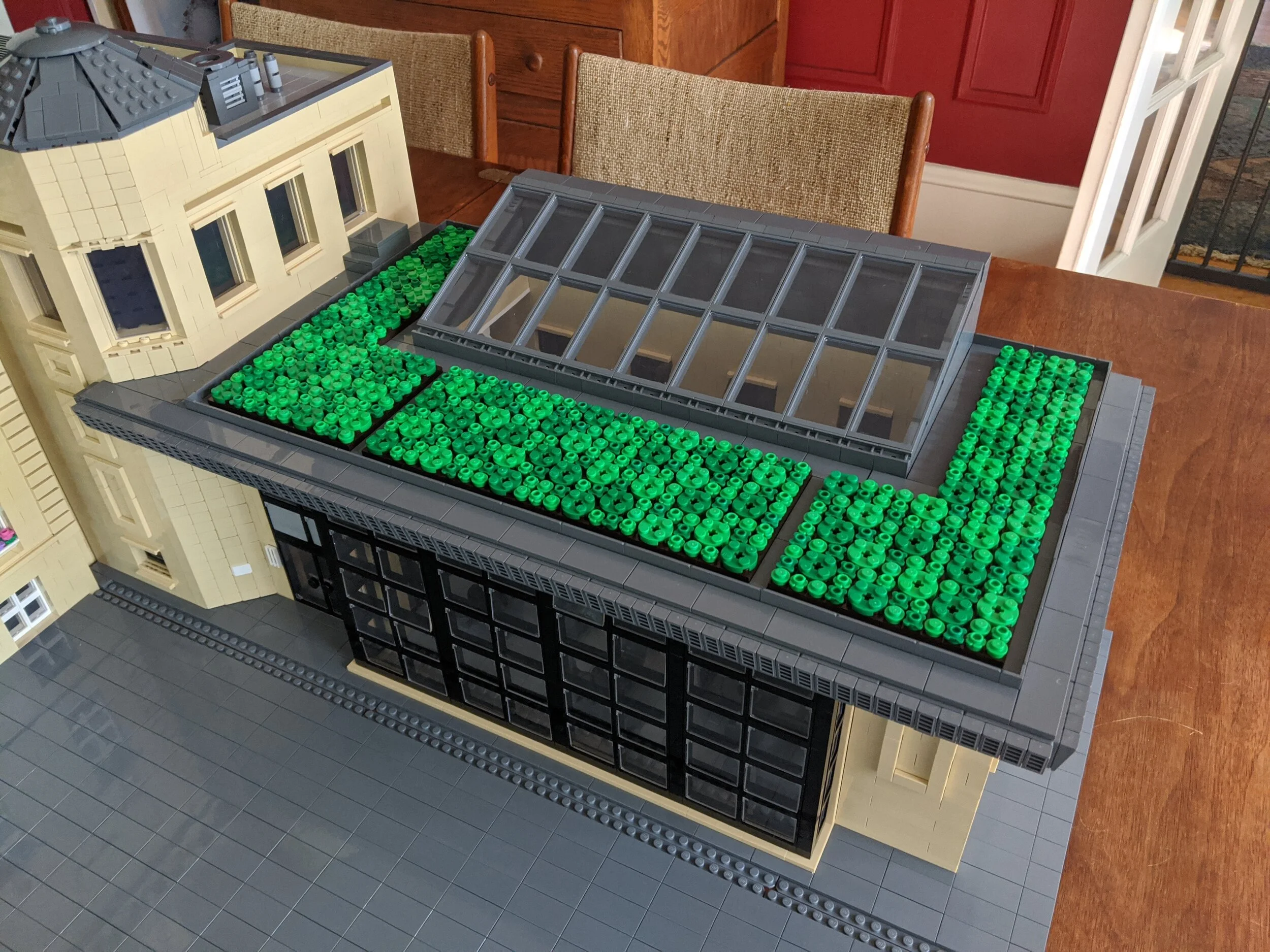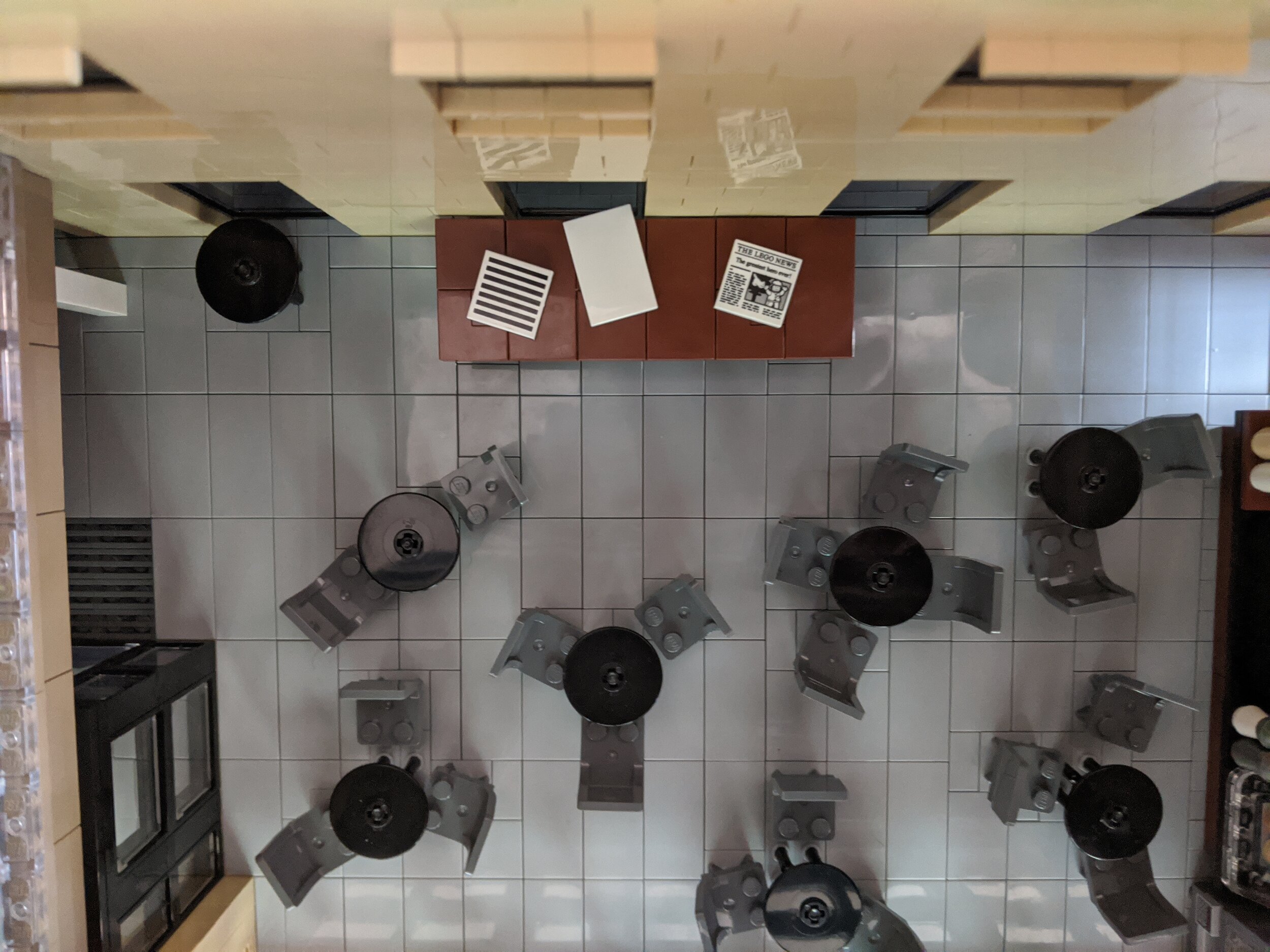LEGO as an art, a hobby, and a business
Beckett Mundell-Wood first won an award in the Brattleboro Museum & Art Center’s annual LEGO Contest & Exhibit when he was in second grade. Now a sophomore at Bangor High School in Bangor, Maine, Beckett has garnered print and TV news coverage for his LEGO models of public buildings. He recently launched his own LEGO design/build business. With BMAC’s 13th Annual LEGO Contest & Exhibit coming up soon, we caught up with Beckett to find out more about where his enthusiasm for LEGO has led.
BMAC: How long have you been interested in LEGO? When did you start designing and building your own creations?
Beckett: I started with LEGO Duplo when I was about 3, but I didn’t have any actual LEGO sets until I was 5. The first LEGO experience I remember wasn’t a standard LEGO set, but a book of instructions for contraptions with a few pieces included that I got for my 5th birthday. It was called “LEGO Crazy Action Contraptions,” and it included instructions for various things from ziplines to rubber band-powered race cars. I got lots of LEGO sets after that, and a couple years later I started making my own creations.
BMAC: What impact did BMAC’s LEGO Contest & Exhibit have on you?
Beckett: I participated in the LEGO contest at BMAC twice, I think in 2012 and 2014. The first time was in second grade, when I built a “Dizzirobbifier,” a small contraption with moving parts and a motor. It was built to scale with LEGO minifgures, and the purpose was to make robbers dizzy. I don’t remember much about it, but I know that I wrote a short description of it and won an award for Best Narrative. The second time was in 2014, when I built a large spaceship with lots of different labeled sections, and I won an award for Best Craftsmanship. It was one of the first times I got to participate in an event where I could get to know a lot of other LEGO fans, and it helped expand my enthusiasm for LEGO building.
BMAC: You’ve built models of four public buildings in Bangor. What have you learned over the course of building them? Do you know what you’ll be building next?
Beckett: The summer of 2017 was when I started having a serious interest in my own LEGO design. I wanted to make a LEGO model of my middle school, but I knew the spare parts I had would not be enough for a large model. That was when I discovered LEGO Digital Designer, an online program that lets you design the model and then tells you what parts you need and what quantities. My first model was based on my middle school, William S. Cohen School in Bangor, Maine. It was about 3,400 pieces and 1.5 meters wide, and I built it during the summer of 2017. My next model was the Bangor Opera House, our local theater, which was 4,100 pieces and much more detailed than the middle school. I built it over the summer in 2018. I made my third model during the winter of 2018 and 2019, based on the Bangor City Hall. It was the smallest one so far at 2,019 pieces (a reference to the year it was finished), but it was also the most detailed one and included four local flags above the entrance, just like the real building (United States, Canada, Maine, and New England flags).
My most recent model was Bangor Public Library. It was by far my biggest model so far at 17,800 pieces, and it was also the most detailed. The models before it were quite expensive (my parents generously offered to pay for them since they were creative endeavors), so I got a grant from the Bangor Commission on Cultural Development and funding from other donors. Including applying for the grant, planning, designing, ordering, and building, the entire process took over a year between May 2019 and June 2020. The building is made up of three separate modules and is over 150 cm wide, 40 cm tall, and weighs over 26 kilograms. It contains arches on the front, interior detailing in the atrium, and the octagonal dome on top.
I learned a lot from these four models, and looking back at my first model of my middle school I can see how much I’ve improved over the last couple years. The roof of the middle school was unstable, and there were several sections where the detailing could have been much better. I originally ordered my parts directly from LEGO through their Pick a Brick service, but I later switched to BrickLink, where LEGO fans can buy and sell new and used LEGO bricks, because it has much larger quantities and assortments of bricks. For the library, I ordered pieces from 42 different sellers, some of which were international. I also switched from LEGO Digital Designer to Stud.io, another program that was much easier to use and had a better variety of pieces. I don’t have any more public buildings to make models of in mind for now, and I’m mostly focusing on my business, Bangor Brick Builds.
BMAC: How did you turn your interest in LEGO into a business?
Beckett: During the design and construction of the Bangor Public Library, I got a couple requests from people who were willing to pay me to make models of their houses and buildings. This, combined with the increasing expense of building these models, led to me starting a business for LEGO design in April. I make custom models of houses and buildings based on real-life measurements and photos. I started by making a website, and I bought some ads. So far I’ve had one completed model, and four other people are currently interested. When I finished the Bangor Public Library in June, it got a lot more press coverage than I was expecting, which helped to spread the word about my business. It’s been really exciting, and the business has expanded a lot faster than I thought it would.
BMAC: Do you see LEGO designing and building as an art, a science, a hobby, or something else? What do you see yourself doing with it in the future?
Beckett: I consider it both an art and a hobby. I was originally interested just because I liked building things with LEGO, but I feel like at this point it’s turned into a much bigger thing than I ever thought it would, and I’ve been able to make a business from it. I’ve been considering possibly studying architecture or something similar because I really enjoy the design process. I’m even more interested in mathematics, which I use a lot when calculating dimensions, scale, and module sizes for the models.

